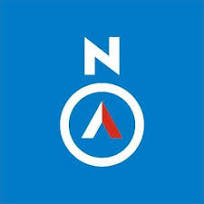Browse transcripts » National Archives / Archives South Holland
Summary (also from the next page)
On 14th 1500, a list of trade goods was made. Several textile products were mentioned, including bleached Guinea linen and bleached Salampores. 1,000 pieces of fine bleached Parcalles were received that year, along with 1,000 pieces of bleached Allegias from Coromandel, 1,000 pieces of bleached red Chelas, 1,000 pieces of blue Radaphons, and 2,000 pieces of sailcloth, mostly black.
500 pieces of Sarasses were painted according to Japanese samples. The Thomese ray skins, which usually gave good profits, could not be sent in too large quantities. They needed to be well-protected from moisture and packed tightly, as the slightest dampness could ruin and infect an entire package.
From Persia, 3 to 4,000 pieces of black prepared goatskin leather from Esfahan were listed. From Surat, 150 to 200 picols of good Catchie were recorded. They didn't request any Putchock since Japan was still well-stocked and there was little demand. It was noted that if none was sent for 1 or 2 years, it would find a better market and return to its previous price. That year it sold for 17 Tael per picol.
From Siam, they had not yet received their annual order, which consisted of:
- 70 to 80,000 pieces of various deerskins
- 6,000 pieces of large cowhides
- 3,000 picols of sappanwood
- 3 to 4,000 pieces of buffalo horns
- 8 to 10,000 pieces of Aijnemonne and Onico ray skins
- 12 picols of wax for office use
Transcription
15 a: 1800: str: gebleeckte salampoeris van 5½ a 6: g. l ider
zullen naer advenandt meer winst geven, als de heel
fijne ƒ 8: 12: desen Jaere becomen
1000: stx: fijne parcallen gebleeckte van 3 a 3½ g. l. 't stuck
1000: stx: Alegias patcherij gebleeckte) nae de monsters nu van h
(naer Cormandel
1000: stx: gebleeckte roode Chelas -
gemaeckt
1000: stx: blauwe radaphons
2000: stx: besaensleer dogh meest swart
500: stx:s Sarassen naede Japanse monsters geschildert
Thomese rochevellen, die doorgaens goede winst geven
connen niet te veel gesonden werden, maer dienen int versenden
:
wel voor vochtigheijt versorcht, en vast gepackt te zijn
vermits de minste Cattigheijt daer bij comende, een
gansch pacq infecteerdt en 't eenemael bederft —
uijt persia
3. a 4. O str:s Espahanseleere bereijde bockevellen, alle swart—
van Zuratte
150. a 200. picol goeden Caetchie, —
poetsiock Eijsschen nu geen, ten aensien Japan daer van
nogh rijckelijck versien, en dienvolgens weijnigh aftreck
in is, zal wanneer 1: â 2: jaere geene gesonden wert
beter Marckt aentreffen, en tot den voorigen prijs comen
is desen Jaers voor 17: Teijl t Picol vercocht
van Siam door dien desen Jaere tot nogh niet
van daer becomen hebben, den voorjarigen
Eijsch zijnde —
70: a 80: C str:s diverse zorteringh hartevellen
6000: stx: groote koehuyden
3000: picol sappanhout
3 a 4000: stx: buffelshoorens
8: 10000: str: Rochevellen Aijnemonne, en Onico
12: Picol wasch tot Comptoijrs gebruijck
Provisien
O.


Source citation
National Archives / Archives South Holland, archive number 1.04.02, Inventaris van het archief van de Verenigde Oost-Indische Compagnie (VOC), 1602-1795 (1811), inventory number 1213, Heren Zeventien en kamer Amsterdam, INGEKOMEN STUKKEN UIT INDIË, Overgekomen brieven en papieren, Overgekomen brieven en papieren uit Indië aan de Heren XVII en de kamer Amsterdam, Overgekomen brieven en papieren uit Indië aan de Heren XVII en de kamer Amsterdam, 1656 SSS. Derde boek, vervolg
Artificial Intelligence (AI)
The summary is created by the computer based on a language model.
Both artificial intelligence tasks are not perfect, but often more than sufficient so that the historical document becomes understandable.

